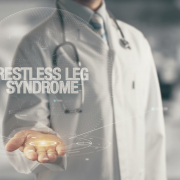DVT Treatment Options
Deep vein thrombosis (DVT) occurs when a blood clot, known as a thrombus, develops in one or more of the deep veins in the body – most frequently in the legs. If left untreated, DVT can be a potentially life-threatening condition. This is because the blood clots can become loose and travel through the bloodstream where they can become lodged in the lungs and block blood flow, known as a pulmonary embolism.
Blood clots from DVT can be caused by a number of different factors that prevent blood from circulating or clotting normally. Examples include certain medical conditions, an injury to a vein, surgery, certain medications, a sedentary lifestyle, or if confined to a bed following an accident or surgery. Although DVT doesn’t always produce symptoms, it most frequently causes swelling and/or pain in the affected leg. The skin may also appear red or discolored with a feeling of warmth in the affected area.
Diagnosing DVT
If you develop signs of DVT, it is important to contact your doctor as soon as possible to prevent any serious complications from occurring. DVT is diagnosed through a physical examination to allow your doctor to check for swelling, tenderness, or discoloration. Further diagnostic testing such as ultrasound, blood tests, venography, or a CT or MRI scan may also be required to confirm diagnosis.
If you develop symptoms such as a sudden shortness of breath, chest pain that gets worse when taking a breath or coughing, a rapid pulse, dizziness, or coughing up blood, seek immediate medical attention as this may be warning signs of a pulmonary embolism.
Treatment
Treatment for DVT is aimed at preventing the clot from increasing in size, breaking loose into the blood stream (which can lead to a pulmonary embolism), and to reduce the chances of DVT happening again in the future. Treatment options can include:
Blood Thinning Medication
Blood thinners also referred to as anticoagulants, are the most common treatment method for DVT. The medication decreases the blood’s ability to clot, and although it cannot break up existing blood clots, it can prevent them from getting bigger as well as reducing the risk of developing new ones in the future. The medication can be taken orally in pill form, injected under the skin, or given intravenously.
Blood-thinning medication needs to be taken as instructed by your doctor and should be closely monitored. Too much or too little of the medication can lead to serious side effects.
Clot Busters (Thrombolytics)
Clot busters, or thrombolytics, are designed to break up clots quickly and are usually only used if you have a more serious type of DVT or pulmonary embolism, or if other medications have failed to work successfully. This medication is given either via an IV line to break up clots or through a catheter placed directly into the blood clot. It is typically reserved for severe cases of blood clots, as the medication can cause serious bleeding.
(Vena Cava) Filter
A filter is generally only used when medications to thin the blood cannot be taken. The small, cone-shaped filter is inserted into a large vein (the vena cava) in the abdomen. The filter is used to capture large blood clots that break loose before they do damage or become lodged in the lungs.
Compression Stockings
Compression stockings are worn to prevent swelling associated with DVT and to increase circulation. They are a conservative form of treatment to provide graduated compression to the lower legs. The strongest amount of pressure starts at the foot and ankle and gradually decreases towards the top of the stocking at the knee. The pressure helps to reduce the chances that blood will pool and clot by improving blood flow and vein function. Compression therapy works well in conjunction with exercise, as both help to regulate blood flow and prevent blood from pooling.
Treatment for Vein Disease in Kansas City, MO
At Missouri Vein Specialists, we provide comprehensive venous healthcare and specialize in minimally invasive methods for treating cosmetic and functional vein conditions including DVT. To find out more about our range of services and treatment options, call us today at 816-792-3400 or you can use our online form and we will contact you.












